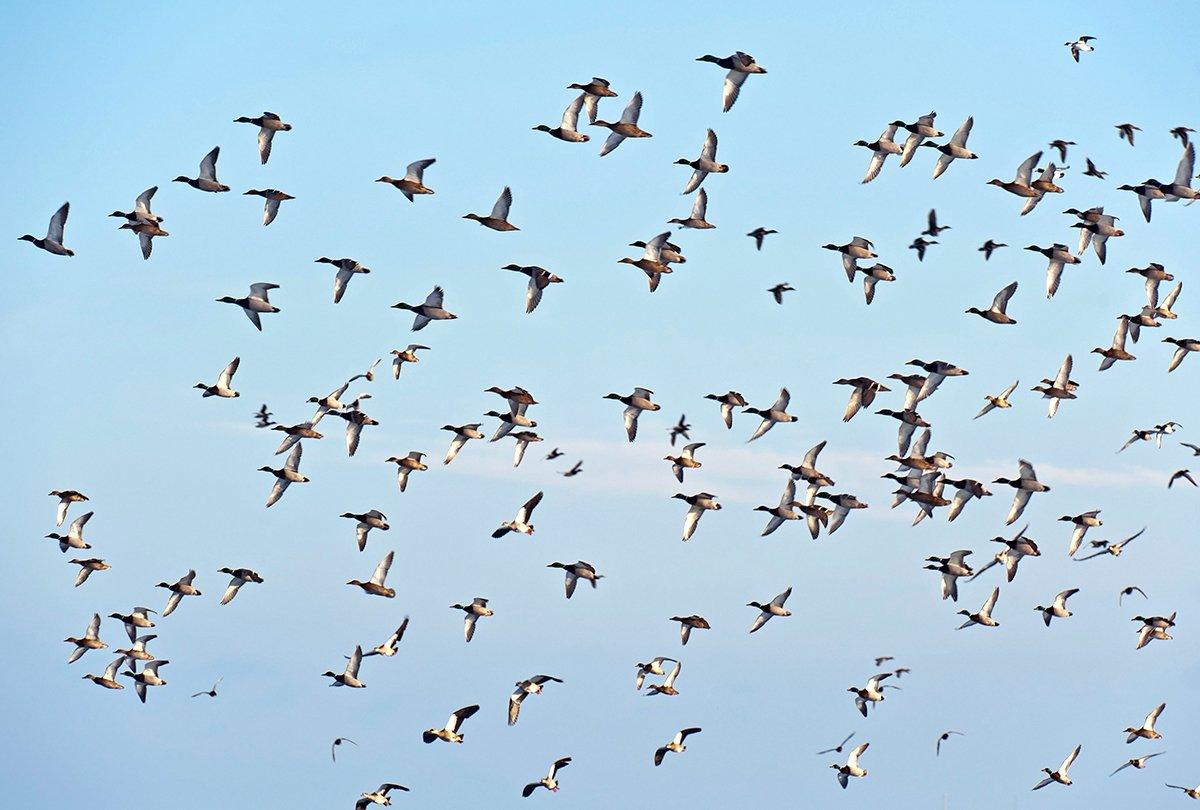Ducks and geese don't always arrive on cue
Much of waterfowl hunting's appeal lies in the mysteries of migration. No season is the same, and each morning can reveal surprises in the form of fresh arrivals or vanished migrants.
Conventional wisdom holds that weather fronts move ducks. Or is it photoperiodism? Or, more likely, some combination of those and other factors? We'll probably never nail down the precise formula, of course, because we're dealing with the behavior of wild birds, and the equation changes constantly.
A recent trip to waterfowl-rich South Dakota provided a nifty microcosm of the annual migration mystery. We arrived in mid-October to warm temperatures and generally southerly winds, which made me think we'd see decent numbers of calendar migrants (gadwall, pintails, wigeon, green-winged teal and others) that were fairly pressured after having been in the area a while. For once, I was spot-on. Two buddies and I found those aforementioned birds in abundance, along with local mallards, but typically at spots hidden from popular roads or high vantage points.
Hard work and constant scouting resulted in good hunting, but like any waterfowlers, we hoped for fresh birds. On cue, a big northwest wind blew through the area one night, and we noted a difference immediately. Pintails seemed to disappear, replaced by increasing numbers of ringnecks and buffleheads. Mallards also seemed more abundant, and Canada geese numbers grew daily. Of course, hunting also got better.
That might seem like a duh moment. Of course the weather front brought in fresh birds, right? Sure, but it doesn't always work that way. My journal and U.S. Fish and Wildlife aerial counts reveal years when seemingly meaningful fronts brought only a trickle of new birds into the Upper Midwest or Dakotas. Conversely, I've also seen balmy autumns when hordes of diving ducks arrived on cue in mid-October and hunters enjoyed great gunning in short sleeves.
So again, will we ever pin down the magic combination of weather and decreasing daylight that prompts ducks to undertake their annual grand passage? Or, as I hinted at before, will we probably only identify general probabilities and trends of birds that don't follow our Gregorian calendar?
I'll never know. And it'll likely take someone with more degrees and much more potent gray matter to figure it out. Until then, I'm fine having conversations about the best bluebill hunting in central Wisconsin usually occurring about Halloween and the best mallard shooting in Arkansas starting after the holidays. There's no precision or science in those statements; only a reflection of the shared appreciation for the mysterious, unpredictable nature of waterfowl. I guess I wouldn't have it any other way.
Click here for more Realtree waterfowl hunting content. And check us out on Facebook.








